Technology is everywhere we look and we are wearing more and more of it.
Tech can make life simpler, more enjoyable and connect people with their communities and the wider world, so much so that it's pretty hard to escape. Even living off-grid doesn't necessarily mean without technology - you can still surf the web and check your emails thanks to the decreasing cost and increasing performance in solar and wind power.
What wearable tech is available?
Wearable technology has been around for centuries, in it's simplest form. From the first glasses for vision in 1276, the wristwatch in the 1898 and the digital watch in 1979. All make our lives more comfortable, convenient and fun.
Smartwatches
Obviously one of the first on our list because we sell replacement straps for fitness monitors and smartwatches!
Every advance in techonology iimproves the funcitonality and performance of smart watches, processors are more powerful than some laptops. The resolution is increased and some now have touchscreens, the limitations being human eyesight to be able see the screen, and accommodating large human fingers.
Fitness Trackers
The dedicated fitness monitors can be worn on the wrist, synchronised to larger devices and some can be twinned with phones, offering similar functionality to smartwatches.

Replacement straps
Not really a technology in itself. The availability and ease of changing smartwatch straps means wearers can change the look of their watch easily and at a low cost, making the watch more wearable for different activities - waterproof devices and straps can improve the wearability and hence longer monitoring time. Longer monitoring means a better profile of activity and fitness.
Smart Jewellery
Bracelets, necklaces and rings all look pretty and offer elements of fitness /health tracking. Fitness monitors do also come in bracelet style straps and different colours for outfit coordination, but earrings, necklaces and rings can be made which not only look like real jewellery, they can carry technology to identify, locate and monitor activity.
Smart Clothing
E-Textiles
Charge your phone whilst out window shopping with solar panel jackets, clock up the miles with inbuilt pedometers in shoes. E-textiles enable charging and connectvity electronics to be literally woven into the fabric.
Smart tracksuits to improve your training - fitness monitoring throughout exercise and training can measure your physiological responses. This can help to overcome limitations and help athletes improve personal bests or break a world.
Not that crazy a concept, however there are obvious issues such as laundering the clothing as well as making it comfortable and light. The e-textile also has to durable to withstand the rigorous exercise it might be subjected to.
Footwear
Smart Socks and Shoes can be fitted with GPS tracking devices - great for children and dementia sufferers with a tendancy to wander. Keep track of your elderly relative easily.
Nike have created a trainer that can automatically adjust the snugness of fit on an athletes foot. Self lacing trainers can detect when to tighten and when to relax the fit according to performance.
Samsung are developing a sportshoe that also monitors the physical aspects of a runner such as foot position whilst running and technique - all could improve fitness and reduce injuries.
It all seems futuristic but Puma developed a running shoe with pedometer and activity tracker back in 1986, being one of the first wearable tech's over 30 years ago. Puma are now re-visiting their running shoe which you could connect to computers of the day, such as Commadore 64.
Head-Mounted Technology
The most obvious is Google Glass - looking more like chemistry googles than Geordi Laforge's eye visor, the glass is not currently available to buy.
Still early days it has been branded a massive failure, which some put down to bad marketing - it's not really clear who would use it and what for other than a high ticket gadget for fun.
Concerns about people's privacy were raised and reports of headaches as a side effect of using it which was likely caused by it's proximity - focusing on the glass would cause eye strain.
It is now re-entering a new stage of development but will not be for general sale to the public.
Cameras
In 1922 the spy camera was created, a far cry from the modern hidden recording devices. GoPro and other makes of camera can be worn on the head or with a chest fitting to film the individual or their view.
These are popular with cyclists who wear the cameras on their helmets both on commutes and recreational rides for various reasons, but mainly to post footage of driving misdemeanours.
Virtual Reality
It was Morton Heilig's Sensorama in 1956 which started the VR ball rolling, he wanted to immerse the viewer in the film they were watching . This eventually lead to the first VR headset being invented in 1968 but it wasn't very wearable, bit heavy, not comfortable - not a success.
Now over five decades later, and although not household goods, they are mainstream.
The latest VR headsets are lightweight, increasingly affordable, portable and really offer full immersion into your game, choose from headsets that work with your PC or as standalone gaming technology.
There are many to choose from and as the tech is refined and improved, we can see VR headsets and fitness monitors linking together for a workout on a Miami beach, a run in the French Alps or a bike ride along the Tour de France routes whilst at home. Giving an intense workout and tracking your improvements on your smartwatch.
Implants
Not really wearable but certainly breaking that human technology divide. Such items have been used for many years, pacemakers and prosthetics to oversome physical conditions that either lengthen lives or make them more bearable.
Not quite as easy as changing a watchstrap!
Surely the most viable contender for earning you the title of Cyborg. Prepare to be assimilated with nano technology that can monitor health and report to medical staff, perhaps you will be able to choose to have an implant to enhance intelligence.
Currently very limited but it is being used to monitor health and is helping to improve the quality and length of life for patients.
Implants have the potential to link smartwatches and fitness monitors to track blood gases, activity, blood sugar and cancer markers - you could monitor your health on many levels.
ID Chips
Lots of controversy over RFIDs - microchips that identify the wearer. Currently only used on pets, there are plenty of good arguments for using them on people too. A great option for people when they are unable to talk or convey who they are, such as security for children and identifying people with dementia.
There are also a lot of negatives about people being microchipped but we won't go into those now.

Brain Implants
Elon Musk's co-founded company Neurolink has bold plans of "Brain-Machine Interfaces" - coupling human brains with microchips to couple people to computers.
Although very much in it's infancy, the melding of technology with human beings has been explored in science fiction for decades, with big investors joining forces with Elon Musk it is probably a good bet that the implants will take off in a big way. Imagine the knowledge you could have at your fingertips if you could connect to Google just by thought?
The future of wearable tech?
The possiblities are endless and it is really promising for physical and all roung health benefits - although we are still waiting for holo-decks and food replicators - all the technological advances mean you will be able to improve your workouts as easily as changing your watch strap!
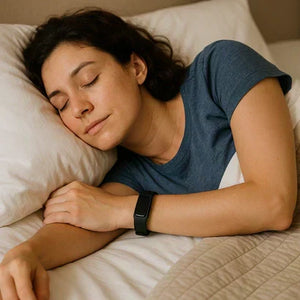 Finding the Best Fitbit Band for Sleeping
Finding the Best Fitbit Band for Sleeping
 Finding a Christmas Apple Watch Strap: Celebrate the Season in Style
Finding a Christmas Apple Watch Strap: Celebrate the Season in Style
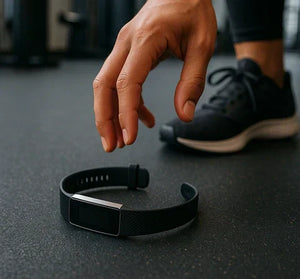 Why Does My Fitbit Strap Keep Falling Off?
Why Does My Fitbit Strap Keep Falling Off?
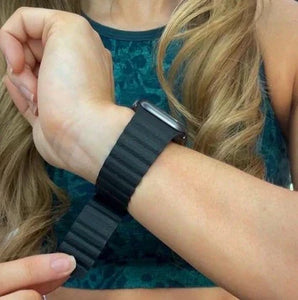 Adjusting Your Apple Watch Band For A Better Fit
Adjusting Your Apple Watch Band For A Better Fit
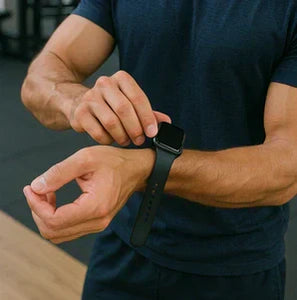 Are Apple Watch Straps Dangerous?
Are Apple Watch Straps Dangerous?
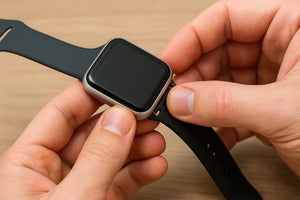 How To Fix an Apple Watch Strap
How To Fix an Apple Watch Strap
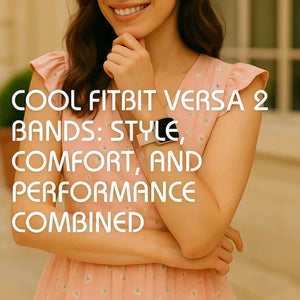 Cool Fitbit Versa 2 Bands: Style, Comfort, and Performance Combined
Cool Fitbit Versa 2 Bands: Style, Comfort, and Performance Combined
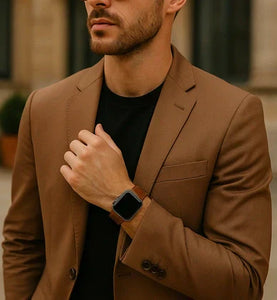 Mens Leather Apple Watch Strap Styles Built for Everyday Sophistication
Mens Leather Apple Watch Strap Styles Built for Everyday Sophistication




